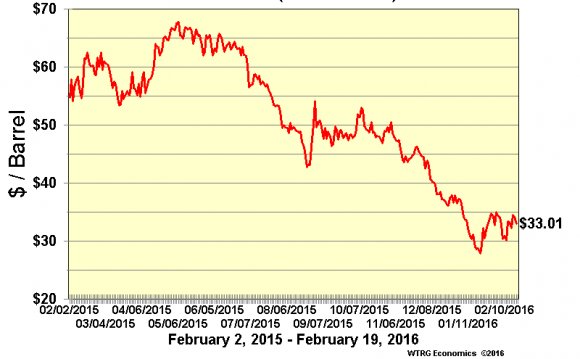
 Open a newspaper and there’s a good chance you’ll find a news story about the price of oil going one direction or the other. To the average consumer, it’s easy to get the impression that there’s a singular, worldwide market for this crucial energy source.
Open a newspaper and there’s a good chance you’ll find a news story about the price of oil going one direction or the other. To the average consumer, it’s easy to get the impression that there’s a singular, worldwide market for this crucial energy source.
In reality, there are different types of crude oil – the thick, unprocessed liquid that drillers extract below the earth – and some are more desirable than others. For instance, it’s easier for refiners to make gasoline and diesel fuel out of low-sulfur, or “sweet, ” crude than oil with high sulfur concentrations. Low-density, or “light, ” crude is generally favorable to the high-density variety for the same reason.
Where the oil comes from also makes a difference if you’re a buyer. The less expensive it is to take delivery of the product, the more you’re willing to pay for it. From a transportation standpoint, oil extracted at sea has certain advantages over land-based supplies, which depend on the capacity of pipelines.
Because of these nuances, buyers of crude oil – along with speculators who will never actually take delivery of it – need an easy way to value the commodity based on its quality and location. Benchmarks such as Brent, WTI and Dubai/Oman serve this important purpose. When refiners purchase a Brent contract, they have a good idea of how good the oil will be and where it will come from. Today, much of the global trading takes place on the futures market, with each contract tied to a certain category of oil.
Because of the dynamic nature of supply and demand, the value of each benchmark is continually changing. Over the long-term, a marker that sold at a premium to another index may suddenly become available at a discount.
The Main Benchmarks
There are dozens of different oil benchmarks, with each one representing crude oil from a particular part of the globe. However, the price of most of them are pegged to one of three primary benchmarks:
- Brent Blend – Roughly two-thirds of all crude contracts around the world reference Brent Blend, making it the most widely used marker of all. These days, “Brent” actually refers to oil from four different fields in the North Sea: Brent, Forties, Oseberg and Ekofisk. Crude from this region is light and sweet, making them ideal for the refining of diesel fuel, gasoline and other high-demand products. And because the supply is water-borne, it’s easy to transport to distant locations.
- West Texas Intermediate (WTI) – WTI refers to oil extracted from wells in the U.S. and sent via pipeline to Cushing, Oklahoma. The fact that supplies are land-locked is one of the drawbacks to West Texas crude – it’s relatively expensive to ship to certain parts of the globe. The product itself is very light and very sweet, making it ideal for gasoline refining, in particular. WTI continues to be the main benchmark for oil consumed in the United States. (Read, A Look at The U.S. Shale Oil Production Industry.)
- Dubai/Oman – This Middle Eastern crude is a useful reference for oil of a slightly lower grade than WTI or Brent. A “basket” product consisting of crude from Dubai, Oman or Abu Dhabi, it’s somewhat heavier and has higher sulfur content, putting it in the “sour” category.
 Dubai/Oman is the main reference for Persian Gulf oil delivered to the Asian market.
Dubai/Oman is the main reference for Persian Gulf oil delivered to the Asian market.
Figure 1
Brent is the reference for about two-thirds of the oil traded around the world, with WTI the dominant benchmark in the U.S. and Dubai/Oman influential in the Asian market.
Source: IntercontinentalExchange (ICE)
Importance to the Futures Market
There was once a time when buyers would primarily purchase crude oil on the “spot market” – that is, they’d pay the current price and accept delivery within a few weeks. But after the oil crisis of the late 1970s, refiners, and government buyers began looking for a way to minimize the risk of sudden price increases.
The solution came in the form of the crude oil futures, which are tied to a specific benchmark crude. With futures, buyers can lock in the price of a commodity several months, or even years, in advance. If the price of the reference crude rises significantly, the purchaser is better off with the futures contract. Many futures are settled in cash, although some allow for physical delivery of the commodity.
RELATED VIDEO












